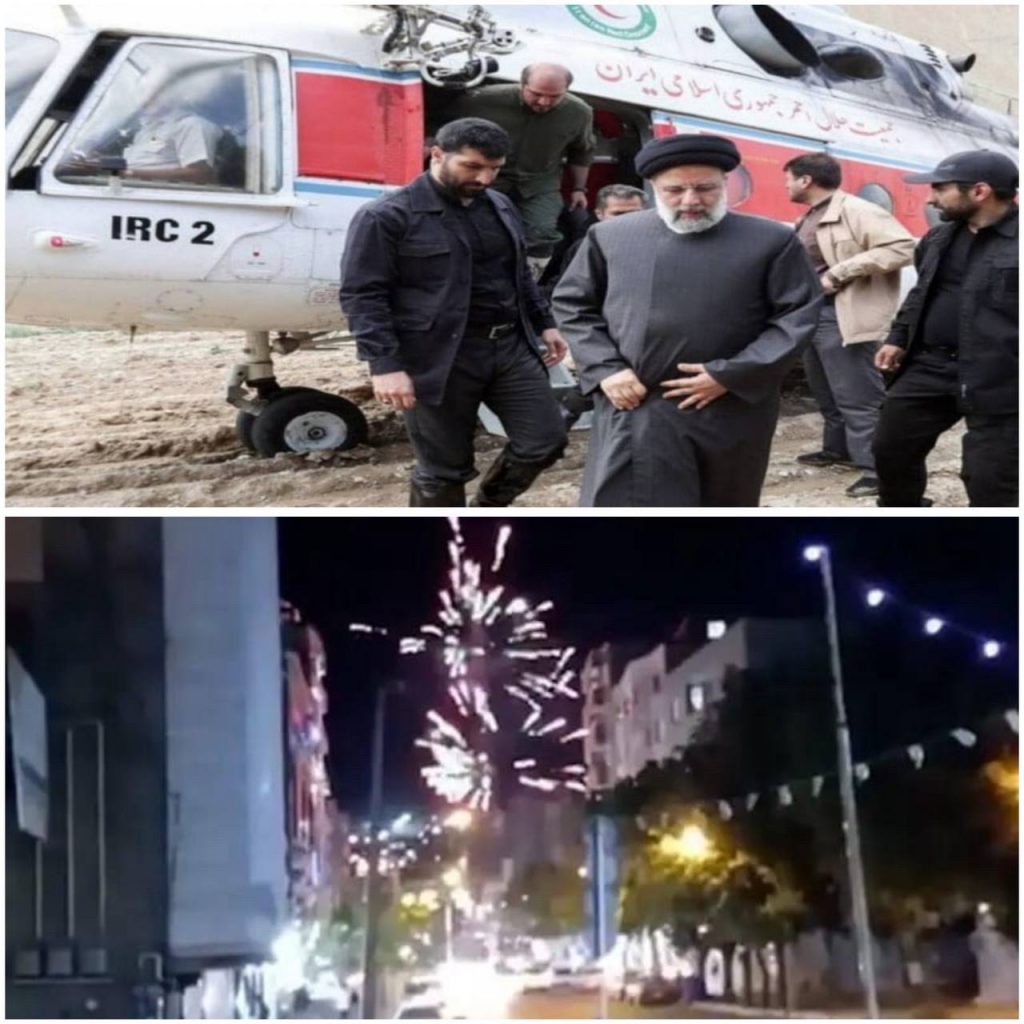
The death of Raisi, the murderous Ayatollah, sparked widespread written and social media reactions, fireworks, dancing, singing, distributing sweets, and prolonged honking in the presence of regime enforcers across various Iranian cities and abroad. Such reactions were abundant among grieving families, protesting athletes, dissatisfied artists, and various other groups.
Citizens of Saqqez, the hometown of beloved Jina Amini, were the first to ignore the regime’s threats and respond to Raisi’s death with widespread fireworks. Simultaneously, joyful reactions and anti-regime statements by justice seekers filled social media platforms.
Gohar Eshghi, the mother of Sattar Beheshti, posted a poem by Hafez on her Instagram story, which translated to “Be happy, for the oppressor shall not reach his destination.” The mother of Arash Farzaneh Jamali posted a video on her account where she was distributing sweets, addressing her late son:
“Happy birthday to the great man without pretense. I know you are always with us. I believe good days and the promise of freedom are coming. Your name will forever be eternal, son of Iran. Happy birthday, which came with good news.”
Members of the “Association of Families of the Victims of PS752” wrote in a statement that they sought Raisi’s trial and punishment in a fair court, continuing: “We are not sorry for his death. We will neither forget nor forgive the killers of Iran’s children.”
Mansoureh Behkish, a member of the Khavaran families who lost six family members in the 1988 political prisoner massacre and has always advocated for Raisi’s trial, posted a video of herself dancing joyfully, writing: “I wholeheartedly share in the joy of Iran’s freedom seekers, fighting women, and all wounded and justice-seeking families.”
Following the news of Ebrahim Raisi and his companions’ death in a helicopter crash, a video of joyous dancing by “Dayeh Afsaneh,” the mother of Jina revolution martyr Pejman Fatehi, went viral on social media, showing her twirling a handkerchief and dancing Kurdish style with a child.
Alongside the citizens’ dancing, most members of various professions showed indifference to Raisi’s death by keeping their shops open, contrary to the staged mourning gatherings in religious centers. Notable sports figures like Khadem, considering the people’s joy over the president’s death, wrote: “One must live in such a way that people remember them kindly after their death.” Football referee Mohammadreza Faghani commented: “What have you done that makes your death so sweet?”
Raisi was among the most insignificant and obedient presidents of the Islamic regime. Consequently, his death was of little importance to the vast majority of people and to the corrupt elites in power. However, his death holds symbolic meaning. He was a political simpleton who, from the age of 20, had been a loyal enforcer of mass torture and executions, which have been foundational to the regime’s persistence. His death exacerbates the current crisis within the ranks of the Revolutionary Guards, the Supreme Leader’s office, and the hardliners, providing a new opportunity for civil, professional, and social movements to strengthen their organization and mobilization efforts. The regime’s failures in various areas, its diminishing support base, and its subservience to foreign powers will increasingly empower the popular movement, further supporting the formation of a grassroots alternative.
The joyous reactions of protesters and fighters find deep and political meaning in this context. Their celebrations reiterated their profound hatred for the Islamic Republic and Khamenei himself, and their determination to overthrow this regime of ignorance and brutality. In this context, there is a need to emphasize broader alignment among the freedom-seeking, egalitarian, and justice-driven movements.

